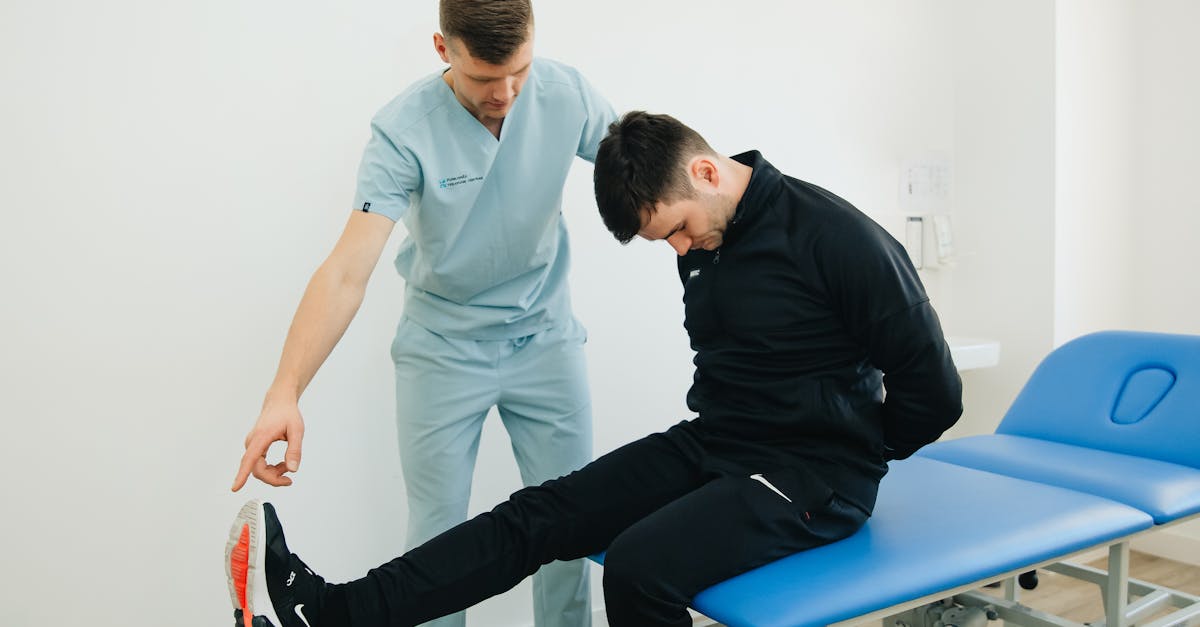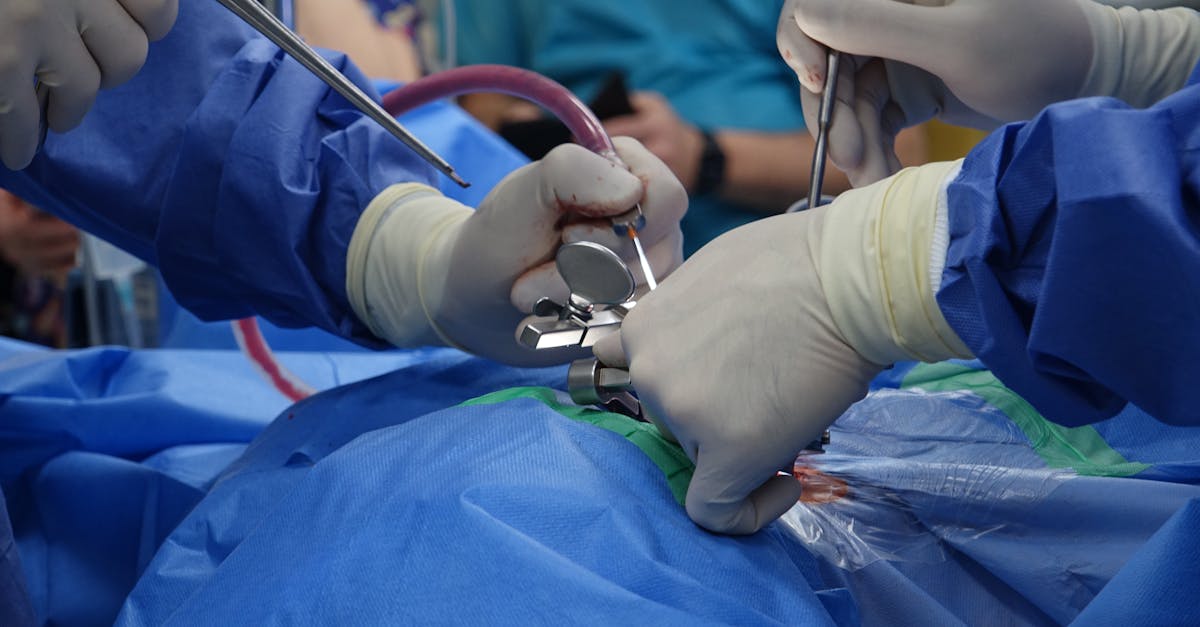|
In Short, Achieving Balance: Mastering Neuromuscular Tension Regulation entails recognizing and addressing muscle imbalances that disrupt the body’s natural harmony. This approach is designed to enhance posture, improve balance, and alleviate discomfort through targeted techniques. By focusing on neuromuscular health, individuals can experience increased strength, stability, and an overall sense of well-being. The method integrates gentle movements and mindful practices to promote self-regulation, making it a beneficial solution for anyone seeking a pain-free lifestyle. |
Achieving Balance: Mastering Neuromuscular Tension Regulation focuses on the significance of neuromuscular tension regulation in promoting physical well-being and preventing discomfort. Addressing muscle imbalances is crucial for enhancing posture, stability, and overall health. By implementing targeted practices, such as dynamics exercises and mindfulness techniques, individuals can improve muscle coordination and restore natural balance. The article emphasizes the importance of recognizing symptoms, understanding their underlying causes, and adopting proactive strategies for optimal neuromuscular health.
Welcome to Pulse Align, where our innovative, non-invasive approach focuses on restoring your body’s natural balance and posture through gentle, imperceptible pulses. By facilitating muscle tone recalibration, we help minimize discomfort and tension, ultimately leading to an enhanced sense of overall well-being.
Restore Balance Naturally
At Pulse Align, our emphasis is on guiding your body to recalibrate itself rather than directly addressing discomfort. This gentle stimulation process encourages improved posture and muscle tone symmetry. Many clients find that as their bodies naturally regain balance, they experience a newfound ease and comfort in their daily activities.
Personalized Care for Every Client
We take pride in offering a personalized approach tailored to meet the unique needs of each individual. Many clients have shared their positive experiences, noting how they have felt a significant reduction in tension and improvement in overall wellness after working with us. It’s rewarding to see our clients regain their sense of balance and connection to their physical self, all while enjoying the supportive and family-friendly environment we cultivate.
Join Us on Your Wellness Journey
We invite you to explore how Pulse Align can be part of your journey towards enhanced well-being. With locations in cities such as La Prairie, Mont-Royal, and Terrebonne, it’s easy to find a nearby clinic that suits your needs. We encourage you to visit our website to learn more and book a consultation for yourself or your family. Remember, Pulse Align serves as a complementary addition to the care you receive from your healthcare team, working alongside it to promote your body’s natural processes.
Book your appointment online today and experience the safe, non-invasive, family-friendly approach that Pulse Align has to offer!
- Identify Imbalances: Recognize signs of muscle tension and discomfort.
- Mindfulness Practices: Incorporate mindfulness and meditation for improved awareness.
- Dynamic Stretching: Engage in dynamic exercises to enhance muscle coordination.
- Strength Training: Focus on balanced strength training to support stability.
- Posture Evaluation: Regularly assess your posture while sitting and standing.
- Breathing Techniques: Utilize breath regulation to reduce muscle tension.
- Movement Variety: Integrate diverse activities to enhance body adaptability.
- Seek Professional Guidance: Consult with specialists for tailored strategies.
Achieving a state of balance in the body is essential for optimal health, particularly when it comes to mastering neuromuscular tension regulation. This concept revolves around understanding and addressing muscle imbalances that often result from various lifestyle factors, leading to discomfort, pain, and reduced functionality. By implementing effective strategies, individuals can restore symmetry within their bodies, enhancing their overall well-being and promoting a pain-free existence.
Understanding Neuromuscular Tension
The body functions as a complex system where muscles and nerves work in harmony to facilitate movement and maintain posture. Neuromuscular tension refers to the state of tension in the muscles and the coordination of nerve impulses that govern their activity. Misalignments and imbalances in this system can lead to excessive tension in specific areas, resulting in pain and discomfort. To reclaim balance, it’s vital to recognize how everyday habits contribute to these neuromuscular issues.
Identifying Sources of Imbalance
Common sources of neuro-muscular imbalance include poor posture, sedentary lifestyles, and emotional stress. Activities such as prolonged sitting or improper lifting techniques can lead to uneven tension distribution across muscles. Regularly assessing posture and remaining aware of body mechanics during daily tasks aids in identifying potential imbalances. Furthermore, staying attuned to the body’s sensations can help detect earlier signs of tension buildup.
Techniques for Regulating Tension
Dynamic Stretching and Strengthening
Incorporating dynamic stretching and targeted strengthening exercises into your routine enhances muscle coordination and promotes balance. Focused exercises that engage opposing muscle groups—such as the abdominals and back—can help restore equilibrium. Establishing a practice that combines both stretching and strengthening will enable the body to achieve optimal functionality and reduce the risk of injury.
Mindfulness Practices
Merging mindfulness practices such as yoga and meditation into your daily life offers profound benefits for neuromuscular health. These practices not only reduce overall stress but also enhance awareness of body mechanics, allowing individuals to identify and correct imbalances proactively. Engaging in conscious breathing techniques can greatly aid in reducing muscle tension while promoting a sense of calm and relaxation.
Embracing a Holistic Approach
Transforming one’s life through neuromuscular tension regulation requires adopting a holistic perspective. This approach encompasses understanding the interconnectedness of the body and mind, embracing the principles of Posture Awareness to foster long-term well-being. Clients who integrate holistic practices report improvements not only in physical comfort but also in emotional resilience, demonstrating the necessity of treating the whole individual.
Engaging Professional Guidance
For individuals struggling to achieve balance alone, seeking professional guidance from specialists can provide personalized strategies. Whether it’s consulting with physical therapists or wellness coaches, their expertise can tailor a recovery and strengthening program suited to individual needs. This collaboration ensures a comprehensive understanding of one’s health conditions and lays the foundation for a sustainable wellness journey.
Restoring Natural Balance
Restoring natural balance within the body through effective neuromuscular tension regulation paves the way for enhanced stability and comfort. By identifying imbalances, embedding mindful practices into daily routines, and fostering a holistic approach, individuals can transition toward a more resilient state of health. Taking these steps not only alleviates current discomfort but crucially aids in preventing future issues.
| Aspect of Comparison | Description |
| Muscle Engagement | Encouraging balanced activation of opposing muscle groups to enhance overall stability. |
| Posture Awareness | Fostering awareness of body alignment to promote natural posture and reduce tension. |
| Movement Variety | Incorporating diverse activities that support adaptability and balance within the body. |
| Mind-Body Connection | Enhancing awareness and connection between mental focus and physical alignment to promote holistic wellness. |
| Consistency in Practice | Emphasizing regular checks and exercises to maintain optimal balance and muscle coordination. |
| Stress Management | Utilizing relaxation techniques to mitigate physical stressors affecting neuromuscular balance. |
| Functional Movement Patterns | Integrating daily movements that promote stability and muscle harmony for better performance. |
| Resilience Building | Fostering a resilient neuromuscular system capable of adapting to various challenges. |
| Body Mechanics | Understanding and applying proper mechanics to prevent imbalances from developing. |
| Holistic Approach | Combining physical awareness with lifestyle adjustments to enhance overall well-being and balance. |
Discovering Transformative Wellness: Client Testimonials on Achieving Balance
In La Prairie, clients have shared their inspiring stories of renewal and balance through Pulse Align’s unique approach. “I felt a significant shift in my body’s tension after just a few sessions,” one client remarked. “The gentle pulses helped me reconnect with my body, enabling it to realign naturally. I no longer wake up with the same discomfort that plagued me for years.” This sentiment echoes the overall experience that many undergo while seeking holistic recovery.
Residents of Mont-Royal have also started to appreciate the profound benefits of this service. A local client noted, “Initially, I was skeptical, but after engaging with the Pulse Align method, my body learned to recalibrate itself. I’ve gained newfound energy and stability that enhances my daily activities. It truly feels like my body is working in harmony now.” Such experiences underline the effectiveness of Pulse Align’s dedication to supporting natural bodily functions.
In Terrebonne, the transformative impacts of Pulse Align are becoming increasingly recognized. “Every session feels like I am shedding layers of tension,” a client declared. “It’s an incredible feeling to experience such relief without invasive measures. This journey has been about restoring my body’s balance, enabling me to move freely and confidently.” Such testimonials illustrate the success clients seek on their path to overall wellness.
Clients in Châteauguay and Saint-Jérôme have reported similar enhancements in their well-being. “I’ve learned to be more attuned to my body,” shared another client, “and the results have been profound. The balance I’ve regained allows me to enjoy activities that I thought I would have to give up. I highly recommend Pulse Align to anyone ready to feel better in their body.” This commitment to improvement and personalized care resonates deeply within the community.
No matter where clients are located—whether in Chicoutimi, Charlesbourg, Deux-Montagnes, Sainte-Marie, or even Panama City—the evidence of Pulse Align’s efficiency is undeniable. Many have expressed gratitude for the collaborative approach Pulse Align takes alongside their healthcare teams. This partnership ensures individuals feel supported throughout their wellness journeys, making every experience valuable.
To explore how Pulse Align can assist you and your family in achieving optimal wellness and body function, please visit Our Clinics. Embrace a wellness journey enriched by our expert services that promote your body’s natural ability to recalibrate and restore balance.
Dr. Sylvain Desforges is a distinguished figure in the fields of osteopathy, naturopathy, and manual medicine. As the founding president of TAGMED clinics and the ACMA association, he has dedicated his career to healthcare innovation and the enhancement of patient care. His expertise lies in chronic pain management, where he integrates advanced techniques to address and alleviate discomfort effectively. Dr. Desforges has become a sought-after practitioner due to his commitment to providing evidence-based care that caters to the unique needs of each patient.
With a wealth of knowledge garnered through years of practice, Dr. Desforges specializes in the regulation of neuromuscular tension. Recognizing that improper muscular coordination often leads to chronic pain and discomfort, he has developed a comprehensive approach that addresses these imbalances at their root. Through the assessment of posture, movement patterns, and muscle tension, he is able to identify the underlying issues contributing to his patients’ ailments.
Dr. Desforges employs a variety of advanced technologies to enhance his treatments, including spinal decompression, laser therapy, and shockwave therapy. These modalities are designed to promote healing and restore the natural balance of the body. Spinal decompression, in particular, is a therapeutic technique that alleviates pressure on the vertebrae and surrounding structures, thus reducing pain and improving overall function. By utilizing these innovative treatments, Dr. Desforges ensures that his patients receive optimal care tailored to their individual circumstances.
The mission of Dr. Desforges is not merely to relieve pain but to empower his patients to reclaim their health and improve their quality of life. He believes that education plays a vital role in this process. By equipping patients with the knowledge and tools necessary to understand their bodies, he fosters a collaborative environment where individuals can take an active role in their healing journey. His approach emphasizes the importance of preventive care, encouraging patients to adopt healthier lifestyle habits to mitigate the risk of future complications.
Located in the heart of Montreal, TAGMED clinics provide a sanctuary for those seeking relief from neuromuscular imbalances and chronic pain. The clinic’s inviting atmosphere is designed to make patients feel comfortable and supported throughout their treatment. Dr. Desforges and his team prioritize building strong relationships with every client, taking the time to understand their specific needs and preferences. This personalized approach ensures that treatments are not only effective but also resonate with each patient’s broader wellness goals.
As a pioneer in the field of manual medicine, Dr. Desforges remains at the forefront of healthcare innovation. He consistently seeks to refine his practice by integrating the latest research and techniques, enhancing the quality of care available at TAGMED clinics. His dedication to both patient satisfaction and professional development has solidified his reputation as a trusted figure in the healthcare community.
In summary, Dr. Sylvain Desforges exemplifies the path toward achieving balance in neuromuscular tension regulation. Through his extensive knowledge of osteopathy, naturopathy, and manual medicine, coupled with cutting-edge treatments and a patient-centered approach, he has transformed the lives of countless individuals in Montreal, Terrebonne, and Mont-Royal. Dr. Desforges embodies the belief that optimal health is attainable through education, innovation, and personalized care.
Neurovertebral Decompression Technology by TAGMED
Mechanism of Action
The neurovertebral decompression technology offered by TAGMED operates by applying a controlled and gradual traction force on the spinal column. This targeted approach effectively increases the space between the vertebrae, thereby reducing pressure on intervertebral discs and nerve roots. By decreasing this pressure, it promotes improved fluid circulation around the affected area, which is crucial for nourishing spinal structures. This process not only aids in decreasing inflammation but also alleviates pain, making it a promising option for those suffering from chronic pain conditions, including disc herniation, disc bulging, and moderate to severe spinal or foraminal stenosis.
Specific Advantages
The non-invasive nature of TAGMED’s neurovertebral decompression therapy is a significant benefit, providing effective relief from chronic pain and associated symptoms. This method reduces pressure on nerve structures, optimizing fluid circulation around the discs, which facilitates a faster recovery process. Patients often report an enhanced quality of life, increased mobility, and reduced levels of discomfort. Such a holistic approach accommodates a wide range of patients, making it suitable for anyone seeking relief without the complications of surgical interventions.
Comparison with Other Treatments
When comparing TAGMED’s neurovertebral decompression technology to common treatment options such as analgesics, corticosteroid injections, surgery, or traditional physical therapy, several key advantages emerge. Unlike these methods, which often involve invasive procedures and have potential side effects, neurovertebral decompression is designed to minimize risks and complications. Patients frequently experience a quicker recovery from treatment, making it a more appealing option for those wishing to return to their daily activities and regain functional independence.
Case Studies and Testimonials
Numerous patients have documented positive outcomes from TAGMED’s neurovertebral decompression treatment for their chronic pain issues. For instance, many individuals have reported substantial and sustainable pain relief, allowing them to resume daily activities faster than they had anticipated. Testimonials often highlight a significant decrease in reliance on pharmacological treatments and improvements in posture and movement comfort. These real-life examples underline the effectiveness of TAGMED’s technology in transforming lives and fostering both physical resilience and emotional well-being.
In the pursuit of optimal health and well-being, achieving balance within our neuromuscular system is paramount. The intricate relationship between our muscles and nerves governs our movement, stability, and overall physical functionality. Understanding how to effectively regulate neuromuscular tension allows individuals to address and mitigate issues that arise from muscle imbalances, which can lead to discomfort and chronic pain.
The significance of identifying symptoms associated with neuromuscular tension imbalances cannot be overstated. By recognizing indicators such as persistent muscle tension, chronic pain, and noticeable physical asymmetries, individuals can take proactive steps toward restoring equilibrium within their bodies. This vigilance fosters a culture of self-awareness that empowers individuals to implement corrective strategies, strengthening not just their bodies but also their overall health.
Incorporating a blend of regular exercise, stretching, and posture awareness practices is crucial for creating a resilient and balanced neuromuscular system. Emphasizing movements that engage multiple muscle groups while enhancing coordination enables individuals to cultivate a stable foundation from which all physical activities can thrive. Moreover, techniques that focus on stress reduction, such as yoga and mindfulness, allow the body to relax and recalibrate, further promoting muscle balance and well-being.
Ultimately, the journey toward mastering neuromuscular tension regulation extends beyond alleviating current discomfort. It encompasses a holistic approach to fostering long-term resilience and vitality. By valuing the interdependency of our neuromuscular systems and embracing practices that support alignment and coordination, individuals can reclaim their physical capabilities, enjoy a more active lifestyle, and experience the profound benefits of balanced living. Through consistent effort and awareness, achieving a state of balance becomes not just an aspiration, but an attainable reality.
Do you suffer from a chronic condition that responds little or not at all to conservative treatments?
At Pulse Align, we understand the quest for improved well-being and the desire to find solutions that resonate with one’s lifestyle. Our non-invasive, innovative method utilizes gentle, imperceptible pulses designed to support the body’s natural recalibration. This unique approach aids in restoring balance and enhancing posture, which can contribute to an overall sense of comfort and diminished muscle and joint tension. Rather than targeting specific discomforts directly, Pulse Align nurtures your body’s intrinsic ability to harmonize itself, creating pathways to a more aligned and balanced life.
What sets Pulse Align apart is our emphasis on promoting the body’s natural processes. We do not specifically focus on discomfort or conditions; instead, our approach is rooted in fostering natural recalibration. Through our gentle stimulation, many individuals report noticeable improvements in comfort and overall posture, which may alleviate common tension and promote a sense of well-being that reverberates through daily activities. Our service highlights how small adjustments can yield significant benefits without the need for invasive measures.
The personalized experience at Pulse Align is testament to the effectiveness of our approach. Clients frequently share their positive experiences, noting significant improvements in muscle tone symmetry and postural alignment. Many have remarked on feeling more balanced and have enjoyed transformations in overall wellness. This includes reports of reduced tension in the neck and back, enhanced comfort during movements, and an enriched quality of life. At Pulse Align, we pride ourselves on listening to each client’s journey and tailoring our services to meet their unique needs.
We invite you to explore what Pulse Align can offer you and your family. Visit our website to learn more about our services and find nearby locations, including La Prairie, Mont-Royal, and Terrebonne, where you can book a consultation. Remember, while Pulse Align complements your wellness journey seamlessly, it is designed to work alongside your healthcare team rather than replace them. Our approach is safe for the entire family—young children and pregnant individuals can also benefit from our gentle stimulation methods.
Start your path towards enhanced posture and overall balance with Pulse Align today! To learn more about our services and book an appointment, visit our website: Pulse Align. Experience a gentle, family-friendly approach that reinforces your journey towards wellness and harmony.
Frequently Asked Questions
Posture Imbalance, body misalignment
Can stress contribute to postural imbalance?
Yes, stress can increase muscle tension and encourage poor posture, thereby worsening postural imbalance.
How often should I do postural exercises?
Ideally 3 to 5 times a week, depending on the program, for long-lasting improvements.
How long does it take to improve misalignment?
The timeframe varies depending on severity. With consistent effort, it may take a few weeks to a few months to see significant improvements.
Can postural imbalance be prevented?
Yes, by maintaining proper posture, exercising regularly, and ensuring good workplace ergonomics, you can help prevent it.
Are proprioception exercises useful?
Yes, they help improve body awareness, balance, and coordination, which promote better posture.
Can postural imbalance be measured objectively?
Tools such as foot scans, gait analysis, posture photography, and certain apps can objectively assess alignment.
Do morning stretches help?
Yes, gentle morning stretches relax muscles, prepare the body for the day, and help maintain better posture.
Can poor posture cause jaw pain?
Yes, improper head and neck alignment may create tension in the jaw, leading to pain or TMJ issues.
Which exercises help improve body alignment?
Core strengthening, planks, yoga, Pilates, and postural stretches are particularly beneficial.
How does body misalignment affect health?
It can cause chronic pain, muscle fatigue, reduced mobility, headaches, and a decreased quality of life.
Gabriel Dupuis knows that life’s pains can often be traced back to the way we sit, stand, and move. As a Posture Awareness Advocate at Pulse Align, he’s committed to showing readers how small adjustments in alignment can bring big relief. With a blend of empathy and evidence-based research, Gabriel translates the science of posture into practical steps that help ease discomfort, protect against injury, and restore natural balance. He believes that everyone deserves to feel strong, stable, and pain-free—and through his writing, he offers the guidance and encouragement to help readers reach that goal.
Medical Disclaimer
The information and advice provided on this site do not replace the advice, diagnosis, or treatment of a healthcare professional. Please note that the author of this article is neither a doctor nor a specialist in a medical specialty as defined by the Collège des médecins du Québec. Manual medicine, functional medicine, and sports medicine as described on this site exclude any medical treatment or diagnosis made by a doctor or medical specialist. Always consult your doctor for any medical questions. For more details, please read our complete Legal Notice.




